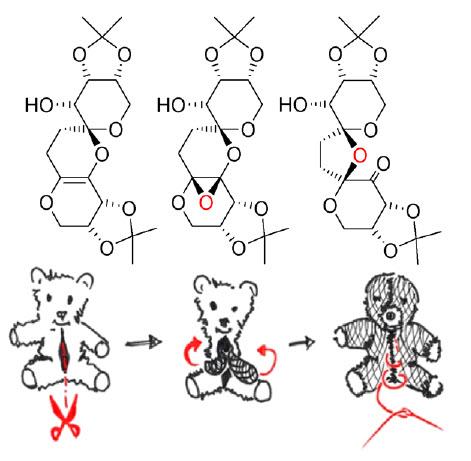What I did not think of was the amazing work a group of researchers put into the study involving elucidating spiroketal rearrangements (i.e. what I should have been thinking).
Okay, well I guess I thought about the researchers too. I was just a little bit confused by the graphic because I just couldn't picture the molecule undergoing some kind of "chemotaxidermy" (probably not related to chemotaxis).
Instead, what I saw was just a rearrangement. No inside-outs.
So, I proceeded to create an alternative graphical summary which I feel captures the specifics of the molecular rearrangement shown in the image:
It can be any old appendage.
They called this the 11-14 rearrangement. What the rearrangement shows is more of a plush zombie teddy bear rather than skinside-out--which for teddy bears is not even plush. You gotta stay plush.
They also uncovered another novel rearrangement ("3-7") that goes a little bit like this:
And I of course have included my teddy bear interpretation of the rearrangement. Step 2 contains a lot of sewing of appendages. You can tweet me if you have any questions about my usage of teddy bear appendages.
There are a bunch more rearrangements which gives you the sense that they can do anything with these spiroketals.
It's like they can even turn a teddy bear inside out.
Come to think of it, that's probably why they chose the image they did.
References:
- Chris Lorenc, Dr. Josep Saurí, Dr. Arvin Moser, Dr. Alexei V. Buevich, Dr. Antony J. Williams, Dr. R. Thomas Williamson, Dr. Gary E. Martin and Prof. Dr. Mark W. Peczuh, Turning Spiroketals Inside Out: A Rearrangement Triggered by an Enol Ether Epoxidation, Chemistry OPEN (2015) Wiley. http://dx.doi.org/10.1002/open.201500122














No comments:
Post a Comment